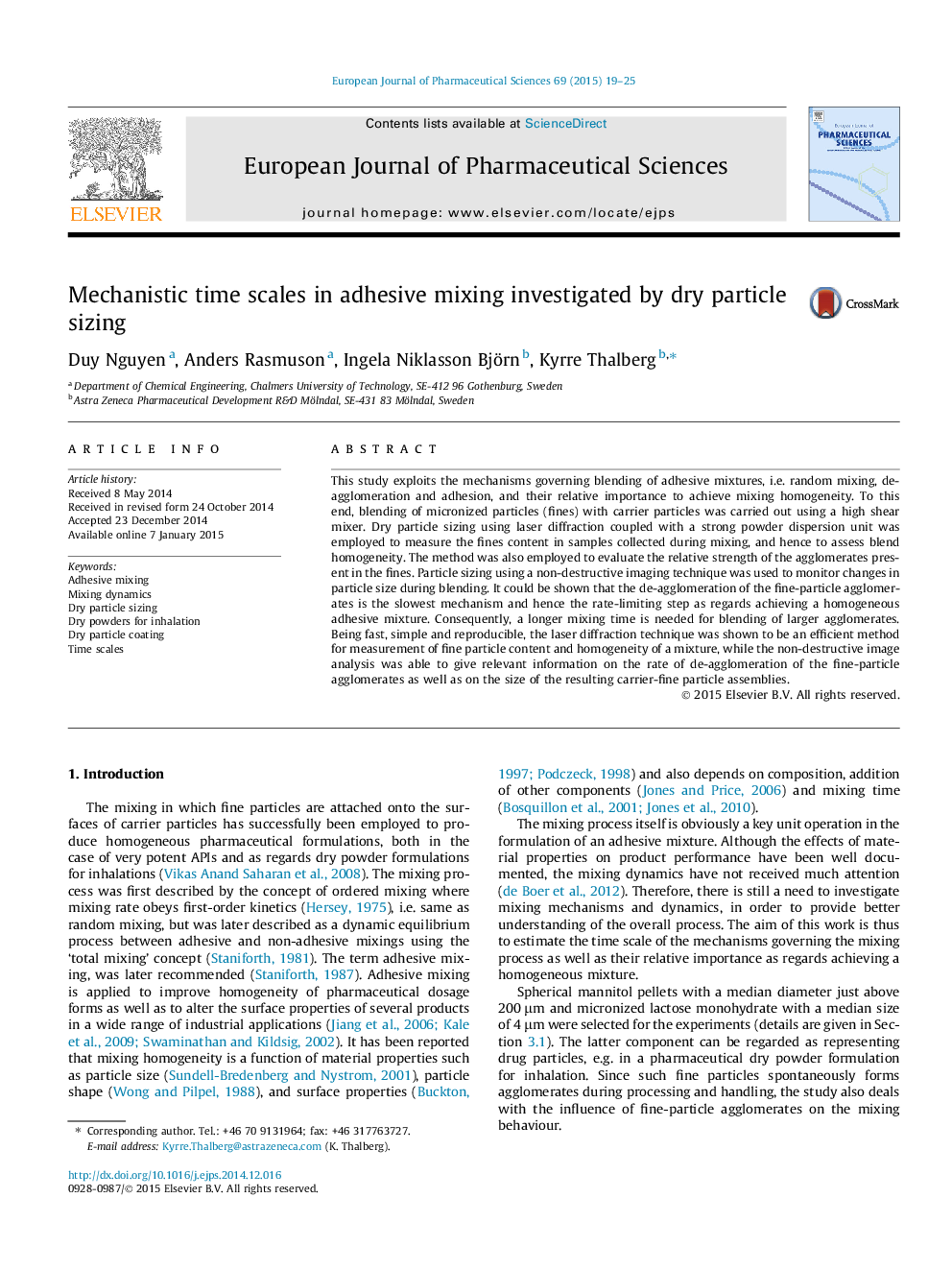| Article ID | Journal | Published Year | Pages | File Type |
|---|---|---|---|---|
| 2480365 | European Journal of Pharmaceutical Sciences | 2015 | 7 Pages |
This study exploits the mechanisms governing blending of adhesive mixtures, i.e. random mixing, de-agglomeration and adhesion, and their relative importance to achieve mixing homogeneity. To this end, blending of micronized particles (fines) with carrier particles was carried out using a high shear mixer. Dry particle sizing using laser diffraction coupled with a strong powder dispersion unit was employed to measure the fines content in samples collected during mixing, and hence to assess blend homogeneity. The method was also employed to evaluate the relative strength of the agglomerates present in the fines. Particle sizing using a non-destructive imaging technique was used to monitor changes in particle size during blending. It could be shown that the de-agglomeration of the fine-particle agglomerates is the slowest mechanism and hence the rate-limiting step as regards achieving a homogeneous adhesive mixture. Consequently, a longer mixing time is needed for blending of larger agglomerates. Being fast, simple and reproducible, the laser diffraction technique was shown to be an efficient method for measurement of fine particle content and homogeneity of a mixture, while the non-destructive image analysis was able to give relevant information on the rate of de-agglomeration of the fine-particle agglomerates as well as on the size of the resulting carrier-fine particle assemblies.
Graphical abstractFigure optionsDownload full-size imageDownload high-quality image (149 K)Download as PowerPoint slide
